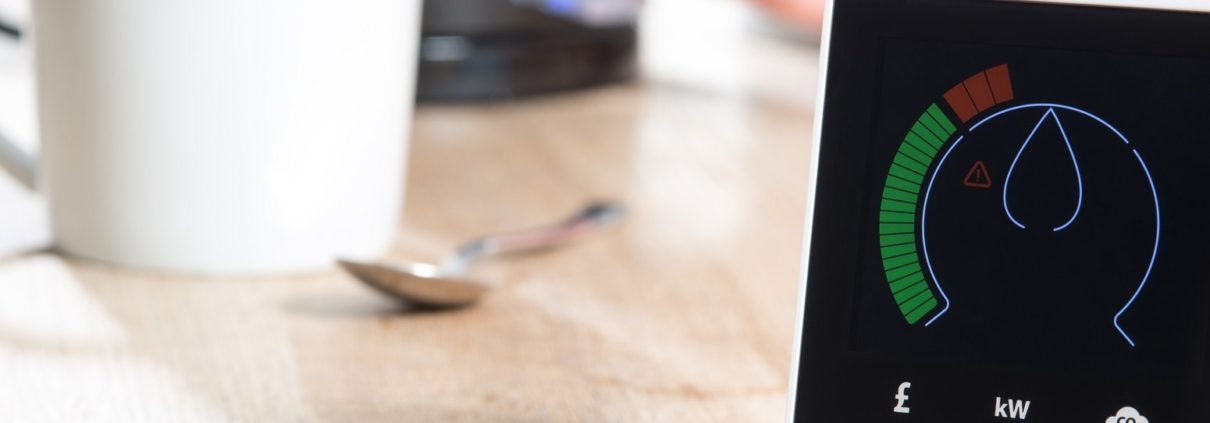Reducing Costs in a Smart Meter Rollout?
Posted on Novemeber 18, 2016 by Christina Maslen & Kirsty Wall
Posted on Novemeber 18, 2016 by Christina Maslen & Kirsty Wall

The UK government has tasked all energy suppliers to install smart meters in homes and small businesses by 2020. The national rollout is one of the largest infrastructure projects since central heating was introduced and will cost an estimated £11 billion. The 50 million smart meters being deployed are designed to detect faults earlier and bill customers more accurately.
The energy suppliers were deemed best suited to take charge of the rollout to keep costs competitive and service high. Naturally, a project of this size, as we have seen in recent news, will encounter unforeseen problems and delays.
Last week, the Data Communications Company (DCC) announced that the technology that supports the interoperability of the meters has finally started to go live.
What does this mean? Suppliers can now begin the installation of interoperable meters. These meters are known as SMETS2 grade meters, SMETS is the commonly used acronym for Smart Metering Equipment Technical Specifications. Until now the suppliers have largely been installing SMET1 meters, a functional smart meter but missing the technology for interoperability.
Why is this important? All SMETS1 grade meters will need to be replaced at some point, so not only could this mean redundant assets but will definitely mean a return visit to a large number of households.
The challenge for suppliers now is to balance installations of SMETS2 meters with the replacement of SMETS1 meters without losing momentum, but also to manage complications that may arise from the rollout of the new interoperable technology.
Here we’ve examined the common challenges and how we think the energy suppliers can avoid chaos when rolling out smart meters.
Planning on shifting sands
The DCC technology has started to go live but, at the moment, that is only for half the country. Suppliers can only begin installing SMET2 meters in certain locations but this could quickly change and force plans to be scaled out to the rest of the UK soon after.
Inconsistency makes it difficult to plan installations and increasing amounts of bad press regarding the financial benefits of smart meters could make rollout targets even harder to achieve.
Workforce options
Before the smart meter programme began, suppliers did not have huge field teams to skill up and send out to do installations. Generally, suppliers had 3 options; recruit and train, outsource, or a mix of both. To date, most of the suppliers have chosen a mix of internal and contracted engineers, the latter tends to be the majority. The difficultly with this approach becomes apparent when they need to assess efficiency.
If a supplier chooses to outsource all or part of the work, it’s very likely that they will have multiple contractors on-board. Unlike the Distribution Network Operators (DNOs) who are segmented into regions, the energy suppliers have customers up and down the country and there are only a handful of contractors who have that kind of coverage.
Each contractor will have their own way of measuring performance and probably different workforce management software (WMS).
Understanding maximum capacity
All suppliers submitted their rollout plans to Ofgem in the early stages of the programme. These will have included models that calculated how many installations they expect to be completed in a certain time period. Given the technology delays of the programme, these models will now be obsolete. But suppliers can struggle to remodel these predictions and make them flexible enough to adapt to changes and unforeseen problems.
Managing equipment in the field
At the beginning of an engineer’s day they will need to have the right equipment to complete their assigned installations. Some suppliers and their contractors have been using warehouses and large re-supply sites but others have found benefits in using smaller pick-up points located closer to residential areas. There are obvious benefits to both methods but it can be difficult for suppliers to understand and test the benefits to different approaches.
Reaching rural areas
This might seem like a long way away for some suppliers but once smart meters have been installed in the urban areas it’s time to move out to the country. We’ve found in similar industries that this can cause a significant drop in efficiency. Not only are these customers bound to be further away from supply sites they are also widely dispersed. Five installations a day could easily become two.
Naturally, suppliers are doing their best to keep costs down, but keep momentum and customer service high.
Here’s our advise on how they can achieve this…
The new technology for interoperable smart meters is exciting and will transform the way the industry works but suppliers shouldn’t go full force into rolling out SMETS2 meters just yet. There is still a huge amount of analogue meters to replace and rushing this next phase could ruin their chances of keeping costs down.
We suggest that management in smart metering departments take time to assess rollout progress to date and understand how they can ramp up installations between now and 2020 but keep costs to a minimum. Using operational data will be the fastest and most cost-effective way to do this.

 Case Study: Boundary Design with CLCH NHS Trust
Case Study: Boundary Design with CLCH NHS Trust | Cookie | Duration | Description |
|---|---|---|
| cookielawinfo-checkbox-analytics | 11 months | This cookie is set by GDPR Cookie Consent plugin. The cookie is used to store the user consent for the cookies in the category "Analytics". |
| cookielawinfo-checkbox-functional | 11 months | The cookie is set by GDPR cookie consent to record the user consent for the cookies in the category "Functional". |
| cookielawinfo-checkbox-necessary | 11 months | This cookie is set by GDPR Cookie Consent plugin. The cookies is used to store the user consent for the cookies in the category "Necessary". |
| cookielawinfo-checkbox-others | 11 months | This cookie is set by GDPR Cookie Consent plugin. The cookie is used to store the user consent for the cookies in the category "Other. |
| cookielawinfo-checkbox-performance | 11 months | This cookie is set by GDPR Cookie Consent plugin. The cookie is used to store the user consent for the cookies in the category "Performance". |
| viewed_cookie_policy | 11 months | The cookie is set by the GDPR Cookie Consent plugin and is used to store whether or not user has consented to the use of cookies. It does not store any personal data. |
